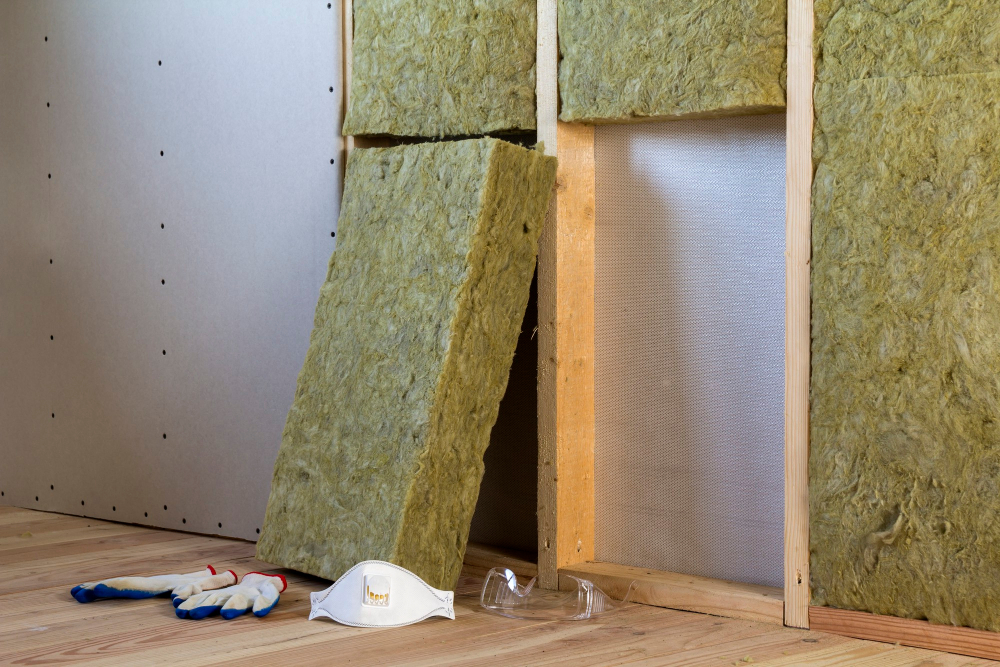House insulation with mineral wool
The thermal insulation system using mineral wool works well as insulation of external walls and some internal partitions. Mineral wool exhibits a high degree of thermal insulation, however, it deteriorates the acoustics of the insulated wall, similar to polystyrene.
How to insulate a house with mineral wool? We start work with gluing skirting boards and window strips. In the next stage, we glue the mineral wool boards with a specially selected adhesive mortar. During the works, we pay attention to the exact finish of the cornices, corners and reveals. The excess of the adhesive comes from the side of the board and must be removed. After completing the assembly, we proceed to sanding the boards and fixing additional pins. The next step will be to create a mesh reinforcement and a mortar that will ensure the durability of the finished facade. The work ends with the application of plaster or finishing boards.
When discussing house insulation with mineral wool, it is worth distinguishing the most important advantages and disadvantages. The greatest advantages of this solution include fire resistance and resistance to UV rays. Wool also has a high vapor permeability, thanks to which it does not restrict the natural air circulation in buildings. One of the greatest disadvantages of this thermal insulation material is its susceptibility to soaking. Therefore, mineral wool will not be suitable for insulating walls susceptible to an increased level of moisture.
Mineral wool – perfect for wooden houses
Thermal insulation with mineral wool
Another, equally commonly used material is mineral wool, recommended especially for insulating the walls of wooden frame houses due to the exceptionally high moisture penetration coefficient. This ensures an appropriate level of vapor permeability, preventing the wood from getting wet and protecting it against the development of mold and fungi. Wool comes in two varieties, mineral and glass, resistant to high temperatures and non-flammable, and an equally important advantage is its flexibility that facilitates laying and thus reaching all hard-to-reach places.
The disadvantage of mineral wool is, in turn, high susceptibility to water saturation and then loses its insulating properties and installation costs, higher than in the case of polystyrene. It is also necessary to select the type of wool for the specific surface and place that we want to insulate. In the form of panels, it will work in attics, ceilings, flat and sloping roofs, coverings will protect pipes of the plumbing and sewage system, and the easiest mats to lay are best suited for insulation of partition walls and floors.

